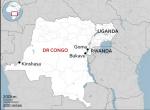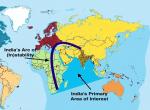Right from the beginning of the Gaza Conflict triggered by the outrage of 7th October 2023, it was very clear that Iran did not want a war with Israel. This was partly because Israeli military capabilities by themselves are demonstrably far more significant, but also because domestically, the Islamic Republic of Iran is not entirely stable. This is partly due to the ongoing leadership transition – Khamenei, the last of the close circle around Ayatollah Khomeini, is old and has been in bad health for quite some time. Once he departs the political arena, the generation that came of age in the eighties and shaped the Islamic Republic (i.e. the hardliners) would jostle for power with those who entered the arena in the 1990s (i.e. reformists), with the office of the Rahbar (Supreme Leader being up for grabs). A full-fledged war would be a distraction for the members of the Iranian establishment. But partly, Iranian reluctance to get drawn into a larger regional conflict with Israel is also on account of the mood of seething discontent that is palpable all across the Islamic Republic, lingering from the time of the Hijab protests of 2022. While the Islamic Republic would appear to have crushed these protests successfully with its heavy-handed repression, the discontent (further fuelled by continuing economic hardship) is far from being pacified or subdued.
In a sense, the accidental death of President Ebrahim Raisi in May 2024 had strengthened the pragmatists in Tehran with the succession of Masoud Pezeshkian, who seems to be determined to steer the Islamic Republic away from a wider conflict – prioritising the country’s economic rehabilitation internationally. Broadening the scope of the Gaza conflict by engaging directly with Israel threatens to jeopardise this.
In a bid to resume Iran's diplomatic rehabilitation on the international stage, Tehran met France, Germany and the UK in Geneva, presumably seeking a path back to the negotiation table over the nuclear issue. This would, presumably, be oriented towards opening a back-channel with the USA. Pezeshkian appears to be set to return Tehran to the earlier Reformist position of attaining nuclear threshold capacity but not crossing the threshold – i.e. stop enriching uranium below 90% (i.e. below weapon's grade).
However, there is considerable pressure within the Tehran establishment to not concede too much to the West, especially now that Trump is all set to return. The tit-for-tat strikes by Israel in April and then October had left Iranian defence policy in tatters – shattering the hope that Israel would not be able to penetrate into Iran’s sovereign territory. Further, the progressive elimination of the top leadership of Hezbollah and Hamas and Israeli incursion into Lebanon had badly dented the fighting capabilities of the Mehvar-e Moqawwamat (Axis of Resistance) that Iran had been using very effectively across the region. The collapse of the Assad regime has lost Tehran not only its oldest ally in the neighbourhood but also its land bridge to the coast of Lebanon. In light of all these developments, a section of the Iranian establishment is advising against the total surrender of the nuclear option. Thus, it may not be wrong to assume the Geneva talks of November 2024 as being more like playing for time, as Tehran licks her wounds.
The ceasefire between Israel and Lebanon (which involved standing Hezbollah down from conflict mode) reinforces this possibility – presumably indicating Tehran wanted to have something on the table for the Geneva talks. However, since Beirut does not have the muscle to implement the UN Resolution 1701, the ceasefire will hold (if it indeed does) till the end of Biden's term in the White House (the 60 days time period for withdrawal stipulated in the ceasefire deal). Whether the ceasefire proves more enduring or not would depend on the following: -
- If Iran is able to use the pause to replenish Hezbollah's armoury (now made difficult by the fall of the Assad regime, which facilitated the transfer of military hardware to the militia)
- Which way Trump stirs would be crucial.
- If Trump gives Israel a free hand and Israel resumes pummeling Hezbollah, the ceasefire might not hold for long. In such an eventuality, Tehran would have to take a call on whether to enter the ring at all or to leave Hezbollah to its own devices (not very likely, but still possible with some serious incentives by way of nuclear talks).
- If Trump wants to reach out to Tehran, as many are now hoping (a very long shot), it will strengthen Pezeshkian and those in Tehran who do not favour Iran remaining an international pariah by going nuclear.
It is reasonable to assume that Tehran would bide its time and stay prepared for crossing the nuclear Rubicon – if it has not crossed it already. Iran may already have enriched uranium to weapon's grade, unbeknown to the world outside, and may still be working on its delivery capabilities (which it is projected to be able to attain in as early as three months).
The issue is, though, that without a resolution in Gaza, nothing is likely to hold in the medium term, and no conceivable resolution to the Gaza conflict is in sight, given the strategy that Israel adopted in an enduring fit of rage since October 2023.
We are not out of the woods by any means.
(The paper is the author’s individual scholastic articulation. The author certifies that the article/paper is original in content, unpublished and it has not been submitted for publication/web upload elsewhere, and that the facts and figures quoted are duly referenced, as needed, and are believed to be correct). (The paper does not necessarily represent the organisational stance... More >>
Image Source: https://cdn.jns.org/uploads/2024/04/F240414TN03-1-1320x880.jpg










Post new comment